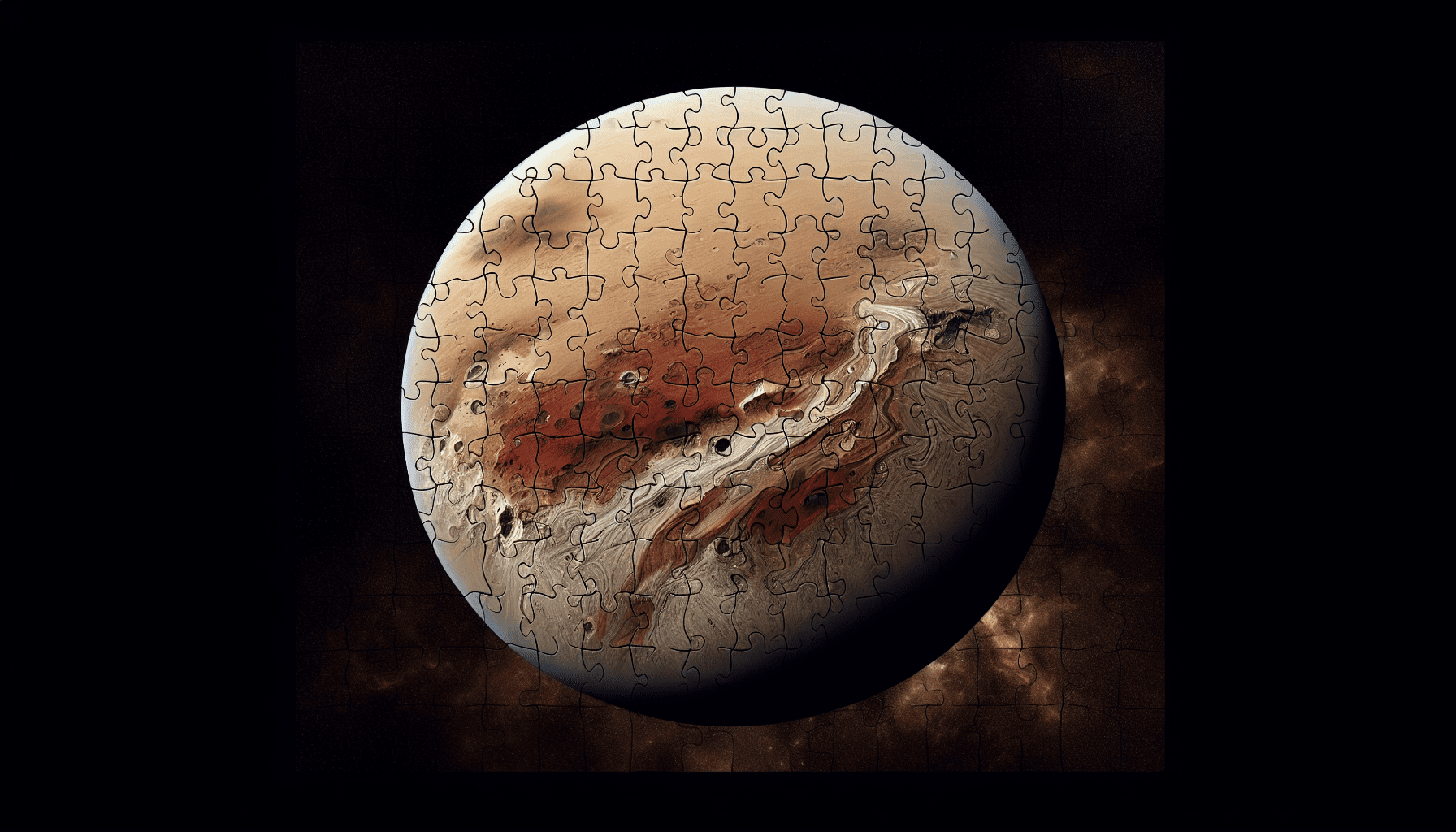Imagine a world where we are not alone in the vastness of the universe, where there are beings from other planets who may have developed civilizations far beyond our own. It’s a concept that has always captured our imagination, and as we continue to explore the depths of space, we are constantly searching for evidence of extraterrestrial life. In this article, we will discuss some of the most compelling pieces of evidence that have sparked our curiosity and fueled the ongoing quest to understand if we are truly alone in the universe. So, get ready to embark on a fascinating journey into the mysteries of the cosmos!
Possibility of Liquid Water
Water is essential for life as we know it. It is a fundamental component of all living organisms and plays a crucial role in various biological processes. Therefore, in the search for extraterrestrial life, scientists often focus on the presence of liquid water as a key indicator of habitability.
In recent years, there has been mounting evidence suggesting the existence of liquid water on other planets and moons within our solar system. For example, on Mars, the Red Planet, scientists have observed features that strongly suggest the presence of ancient water. These features include dried-up riverbeds, polar ice caps, and the discovery of minerals that can only form in the presence of liquid water.
Additionally, the Curiosity rover, which has been exploring the surface of Mars since 2012, has made significant findings regarding the planet’s past habitability. It has detected organic molecules, the building blocks of life, in Martian rocks. These organic molecules contain carbon, an essential element for life as we know it, further supporting the possibility of past or even present microbial life on Mars.
Recent Discoveries of Exoplanets
The search for extraterrestrial life extends far beyond our own solar system. In recent decades, astronomers have identified thousands of exoplanets, which are planets orbiting other stars. These discoveries have greatly expanded our understanding of the potential for life in the universe.
One key factor determining a planet’s potential habitability is its location within the star’s habitable zone. The habitable zone, commonly referred to as the “Goldilocks zone,” is the region around a star where conditions are just right for liquid water to exist on a planet’s surface. This is considered a crucial criterion for the emergence and sustainability of life.
Among the exoplanets discovered, one particularly intriguing find is Kepler-186f. It is the first Earth-sized exoplanet found within the habitable zone of its star. Although little is known about its composition and atmosphere, the presence of an Earth-sized planet in the habitable zone raises the possibility of it hosting conditions suitable for life as we know it.
Extremophiles on Earth
To expand our understanding of the potential for extraterrestrial life, scientists have turned their attention to extremophiles—a diverse group of organisms living in extreme environments on Earth. These environments include deep-sea hydrothermal vents, freezing Arctic regions, scorching hot deserts, and highly acidic or alkaline environments.
The adaptability and resilience of extremophiles in these harsh conditions have fascinated scientists. They have observed organisms thriving in extreme temperatures, high pressures, and even environments with toxic chemicals. Such incredible adaptations have important implications for the possibility of life existing in similarly extreme environments on other planets or moons.
Studying extremophiles allows scientists to expand the range of conditions in which life could potentially exist. By understanding the limits of life on Earth, researchers can better identify the potential habitability of diverse environments throughout the universe.
Panspermia: The Galactic Spore Theory
One intriguing concept in the search for extraterrestrial life is the idea of panspermia. Panspermia suggests that life could have originated on one planet and then spread to other celestial bodies, such as comets or asteroids. These bodies would act as “seeds,” carrying microbial life and potentially spreading it across the universe.
There is evidence to support this theory. Organic molecules, the building blocks of life, have been detected on comets, such as Comet 67P/Churyumov-Gerasimenko. These organic molecules could have been delivered to Earth through comet impacts, potentially seeding our planet with the building blocks necessary for life to emerge.
This possibility is further supported by the resilience of microbes to survive the harsh conditions of space. Recent experiments have shown that certain microorganisms can withstand the extreme cold, vacuum, and cosmic radiation encountered during space travel. This raises the possibility that microbial life could survive the journey through space and potentially colonize other planets or moons.
Radio Signals: SETI’s Search for ET
The Search for Extraterrestrial Intelligence (SETI) is a scientific endeavor focused on detecting possible signals from intelligent extraterrestrial civilizations. Researchers use radio telescopes to search for patterns or signals that cannot be easily explained by natural phenomena.
While there have been many unexplained radio signals detected, the most famous and intriguing one is known as the “Wow! signal.” In 1977, a strong narrowband radio signal was received, lasting for 72 seconds, before disappearing. The signal was so significant that astronomer Jerry Ehman wrote “Wow!” on the printout, giving it its name. However, despite subsequent efforts, the origin of the Wow! signal remains a mystery.
These intriguing radio signals and the continued efforts of SETI inspire hope that we might one day establish contact with intelligent extraterrestrial civilizations.
Fermi Paradox: Where is Everybody?
Despite the high probability of the existence of extraterrestrial life, the lack of contact with such civilizations has led to what is known as the Fermi Paradox. Named after physicist Enrico Fermi, this paradox questions why, if there are a large number of potentially habitable planets in the universe, we have yet to encounter any sign of extraterrestrial intelligence.
Several possible explanations have been proposed for this silence. One theory suggests that advanced civilizations might be deliberately avoiding contact, either due to a lack of interest or out of concern for their own safety. Additionally, the vast distances and limitations of current technology make interstellar communication and travel incredibly challenging, further reducing the chances of contact.
Another thought-provoking concept is the Great Filter. This theory suggests that there may be certain milestones or challenges that civilizations must overcome in order to survive and progress. If a “Great Filter” exists, which could be anything from the emergence of life to the development of advanced technology, it may explain why we have not yet encountered other intelligent civilizations.
UFO Sightings and Alien Abductions
Accounts of UFO sightings and alleged alien encounters have long captured the public’s imagination. While many reports can be attributed to misidentifications or hoaxes, some remain unexplained, fueling speculation about extraterrestrial life.
Unidentified Flying Objects (UFOs) refer to any object or phenomenon that cannot be readily identified. Numerous sightings of strange aerial phenomena have been reported over the years, often described as exhibiting unconventional flight patterns or defying the laws of physics. These sightings have led to intense debates, with believers arguing that they are evidence of extraterrestrial visitations.
Similarly, accounts of alleged alien abductions have been a subject of controversy and skepticism. While some individuals claim to have been abducted and subjected to medical examinations or other experiences by beings from other worlds, the scientific community remains highly skeptical of these claims. Critical analysis of such accounts often reveals alternative explanations rooted in psychology or sleep disorders.
Breakthrough Listen: The Most Comprehensive Search
Recognizing the importance of searching for extraterrestrial life, the Breakthrough Initiatives launched Breakthrough Listen—a comprehensive search program. It is aimed at actively seeking signs of intelligent life beyond Earth.
With this ambitious program, scientists are actively listening for potential signals from one million nearby stars, as well as scanning the nearest 100 galaxies in the hope of detecting technosignatures—signs of advanced civilizations. The program utilizes some of the world’s most powerful telescopes, collecting vast amounts of data in the search for any hint of extraterrestrial intelligence.
Future Missions: Searching for Life
In our continued quest to search for signs of life beyond Earth, several future missions hold great promise. NASA is planning a Mars sample return mission, which aims to bring back samples from the Martian surface for detailed analysis on Earth. These samples could potentially provide definitive evidence of past or present microbial life on the Red Planet.
Another exciting mission is the Europa Clipper, set to explore Jupiter’s moon Europa. Europa is believed to have a subsurface ocean of liquid water, beneath its icy crust. The mission will study the moon’s elusive ocean, seeking insights into its potential habitability and the possibility of life.
Additionally, the James Webb Space Telescope, scheduled for launch in 2021, will have the capability to search for biosignatures—indicators of life—in the atmospheres of exoplanets. This revolutionary telescope holds great potential for expanding our understanding of the potential for life beyond Earth.
As technology advances and our knowledge of the universe grows, the search for extraterrestrial life continues to evolve. Each new discovery, whether it be evidence of water on Mars, the detection of exoplanets in the habitable zone, or the resilience of extremophiles, adds to the mosaic of evidence that fuels our curiosity and sense of wonder about the possibility of life beyond our pale blue dot.

